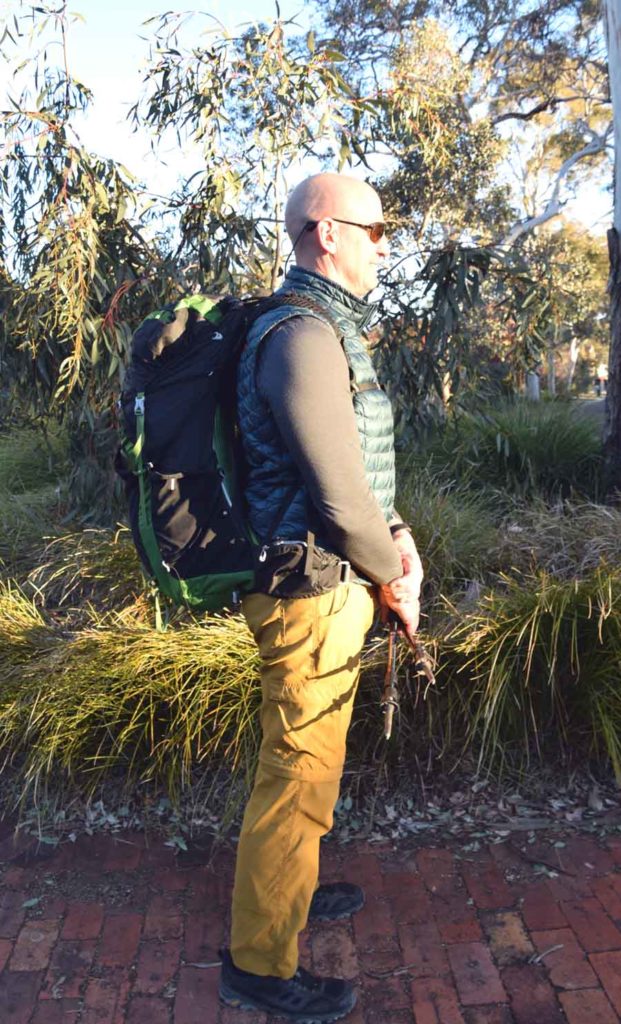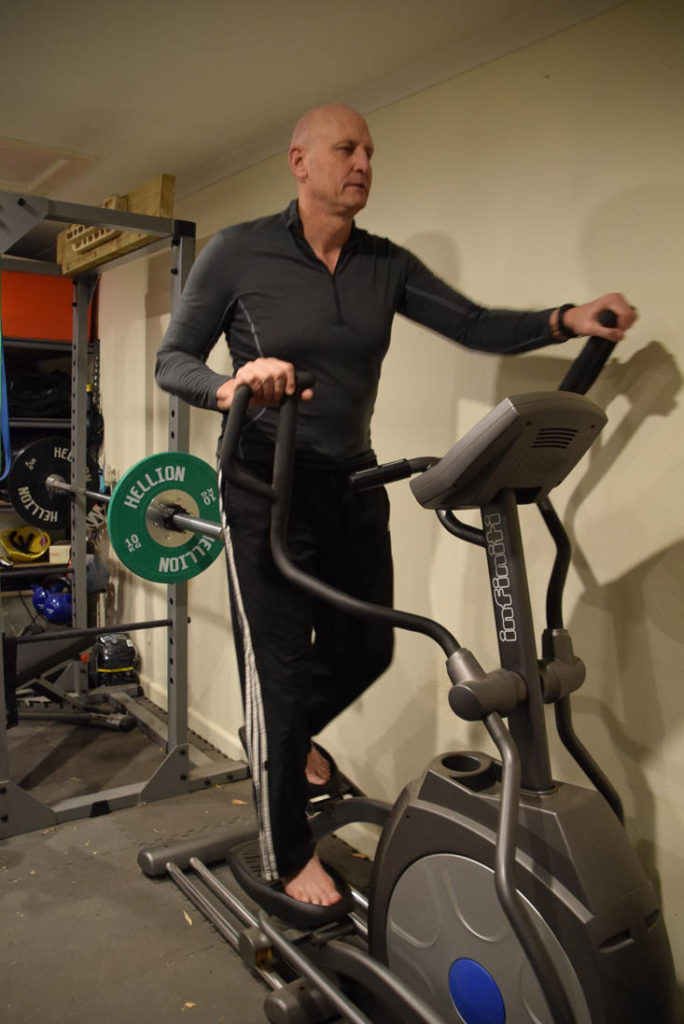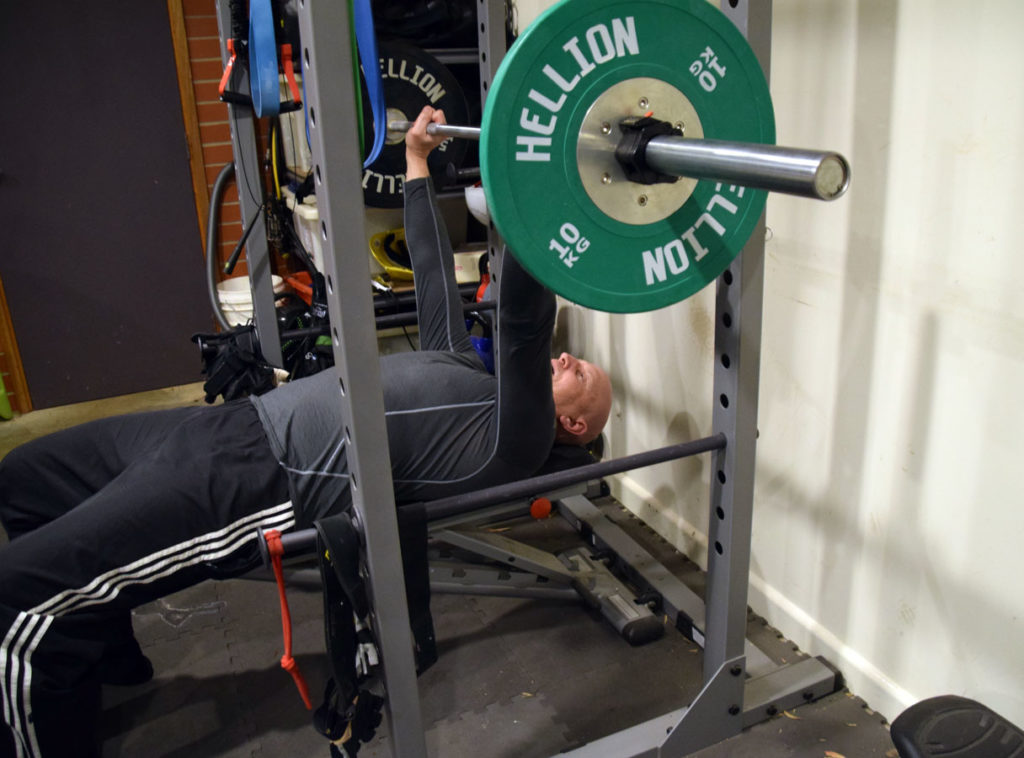Getting fit for hiking
Fitness
Over the past 15+ years I have done a number of multi-week long distance hikes and when I talk to other hikers one thing that ceases to amaze me is people’s preparation, or should I say, lack of preparation. For me physical fitness is a part of who I am. I was physically active at school and for most of my working career. It’s really only been the last 10 years that has seen me slowdown physically from a work perspective and this was when I really started to ramp up my hiking. Now if you talk to any fitness professional or doctor without fail they will all tell you that being fit for your chosen activity is not only a good idea but will ensure that you enjoy it that much more.
But what does ‘being fit’ mean and how does this relate to hiking? Do I need to hit the gym and lift heavy weights? There really is no single answer here simply because everyone is different is how they hike. For some hiking means a 2km walk once a month with a light day pack on flattish ground. For others it may mean doing a thru hike where they cover 20+km a day over difficult terrain for multiple days and are carrying a heavy pack. While these activities are the essentially the same the difference in intensity and load bearing will require different training regimes with the ultimate goal being to comfortably undertake the walks that you have chosen to do. So when we talk fitness for hiking what are we talking about?
To listen to the podcast version of this article go here
What’s your goal?
The first thing we need to look at is what you are trying to achieve. For most keen hikers the majority of us do shorter walks of varying lengths and if we are lucky will do a longer trip on a semi regular basis. If this describes you may not need to do anything special.
The majority of my hikes are day hikes, mainly under 10km in length with most of my overnight trips being single nights with a pack of under 10kg in weight. At least once a year I will do a 5+ day hike typically averaging no more than 15km/day.
Between walking to work and the hiking that I do I average at least 70km of walking each week. In addition I also do aerobic exercise or weigh training in a gym, so this means that I usually don’t do any specific training for my hikes as my average weekly activity caters for this.
When I first wrote this article I was less than a month out from a 1000km walk on the Bibbulmun Track in Western Australia and in addition to my regular fitness regime I ramped up my training which started six months out, and then again at the two month mark. Building fitness prior to a big hike is critical given that I typically plan on doing big days for a 5-6 week period. Whatever your goal factor in fitness training as part of the planning process and allow yourself plenty of time to prepare.
Aerobic fitness
The first aspect of fitness preparation is aerobic fitness. A well known saying that you will hear hikers advocate either in person, or in online blogs, is the best way to prepare for a hiking is to hike. In principle I agree with this and for me this is certainly the mainstay of preparing for my hikes.
Look at the type of hiking that you are doing and replicate this as far as possible in your preparation. If you are planning on doing multiple days of hiking, then at the very least you should be doing hikes of similar distances before you start your trip, and where possible longer overnight trips. Don’t forget that you will be carrying a weighted pack when you go hiking so ensure that you include pack training as part of your regime. Don’t just walk on a flat surface but integrate hills as well particularly if that replicates what you ae planning to do. I usually like to train with a pack that is around 2kg heavier than what I will be carrying on the trip so that when my journey starts it feels easy.
In addition to hiking (both with and without a weighted pack) I also integrate other types of aerobic training including using a cross trainer and bike, both gym based. I find that integrating these non-hiking activities is where I really get the sweat up and in addition I use my muscles in a different manner rather than the same repetitive action that is walking. You can also include swimming, running, or other cardio based activities. Do what you enjoy as this will make it easier.

Pack Training

Cardio training. Raise some sweat every now and then
Strength Fitness
For most hikers while aerobic training is high on their list strength training is something that most people neglect. Strength training performs a number of roles. It helps to build up bone density, particularly as we get older, it builds up general robustness, and it allows us to pick up a heavy pack without injuring yourself. If you can’t pick up your pack, then regardless of the weigh then it’s too heavy. Either lighten your load or train to increase your strength.
Strength training doesn’t necessarily mean lifting weights although I personally find this an easy option. There are many body weight exercises that can be used to improve strength. Strength training is also not just about the legs but includes the core, back and shoulder muscles.

While hiking is all about the legs don’t forget the upper body. You don’t have to lift really heavy weights and in fact you can do strength training by doing exercises that rely on your own body weight such as push ups, pull ups, and wall sits. You can also improvise by using things like orange juice containers with water in them. be creative.
Flexibility/Stability
Like strength training many people tend to ignore flexibility and stability training. Flexibility and stability are different and usually require different training but aren’t exclusive.
I will usually do a number of 30km+ days of walking each year both with and without a pack and by the end of the day I find that my leg muscles have become locked into a limited range. This is the reason that I use a cross trainer and bike in the gym as I find that it works my muscles in a different way. In addition doing dynamic stretch’s such as leg swings and calve raises at the start of each day once your muscles have warmed up gets the legs muscles rearing to go.
Stretch during the day during breaks and don’t forget to stretch at the end of the day otherwise you will have a poor night’s sleep and wake up stiff and sore the next day. (Podcast episode 63 physical maintenance on the trail.) I also take a small massage ball (54grams) on longer hikes and roll out any kinks that I have which does get some strange looks from time to time.
In regard to stability walking on uneven ground is the best way to train. This allows all the little stabiliser muscles in your legs to strengthen which means that if foot slips or if your ankle rolls then you are less likely to injure yourself.

Small massage ball about the size of a golf ball and weight 54 grams
Bringing it all together
Habit
The more more regularly you do something the more of a habit it becomes. When training for a particular trip or just hiking in general be regular about what you do. For many of us it’s so easy to say ‘I’ll just stay in bed little bit longer’, or ‘its to cold/to wet/to hot/to windy to go outside’. As a fitness nut I’m no different I still struggle at times and will use no end of reasons. My main exercise time is early morning and unless I’m sick I will exercise if that is what I had planned. If I sleep in and don’t have enough time to do the particular activity that i had scheduled I’ll still get dressed and go for a short walk even if its for 15 minutes.
Use common sense
One issue that long distance hikers have is repetitive strain injuries brought about by excessive repetitive motions. This is more related to long distance thru hikers doing big milages day in, day out. It can also impact on those hikers doing shorter multi day walks who haven’t done any regular training. In preparing for a hike and in actually doing a long hike ensure that you factor in rest days. When training allow a full day off where you aren’t doing any exercise once a week to allow your body time to recover. When doing a longer hike factor in rest days based on your own abilities and needs.
In addition when starting a longer hike don’t go all on on the first day but instead start out with lower distances and build over a period of days/weeks.

If you have planned to exercise don’t use excuses unless you are unwell. It may be cold/wet/hot/windy but so long as you wear the appropriate clothing it can still be enjoyable
Last words
Whatever type of hiking you do ensure that you have the appropriate fitness levels. The longer and more complex the hike, the longer the lead in time that is required to prepare so ensure you consider this in you planning and make allowances for what you need to do. Be realistic in your build up, we all have lives to live and a training regime will need to fit in with your other commitments.
If you are new to hiking start out slowly and if you are new to physical training, see a doctor and get yourself checked out to ensure that there are no underlying medical issues. Build up slowly and remember that your hiking to enjoy yourself, whatever that means for you. Happy hiking!